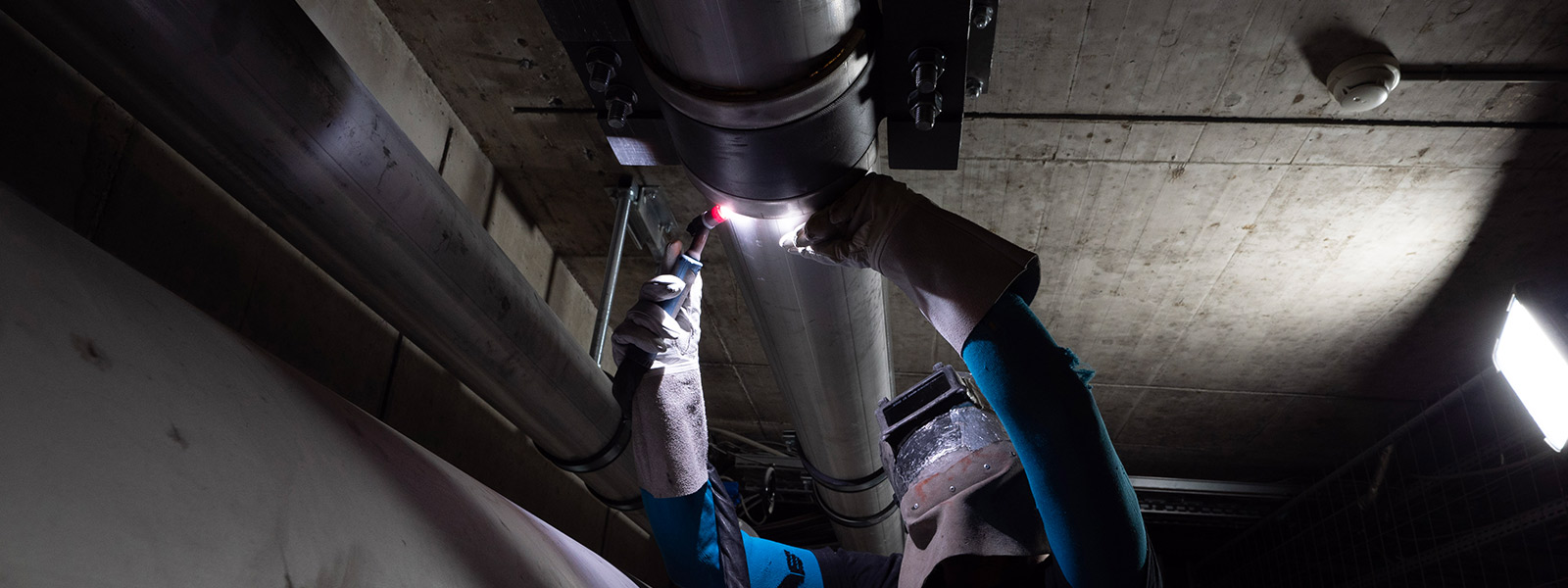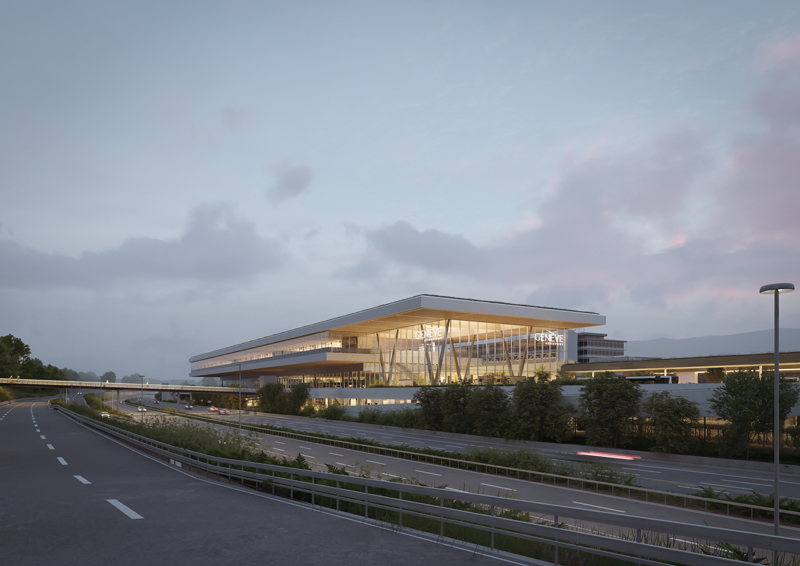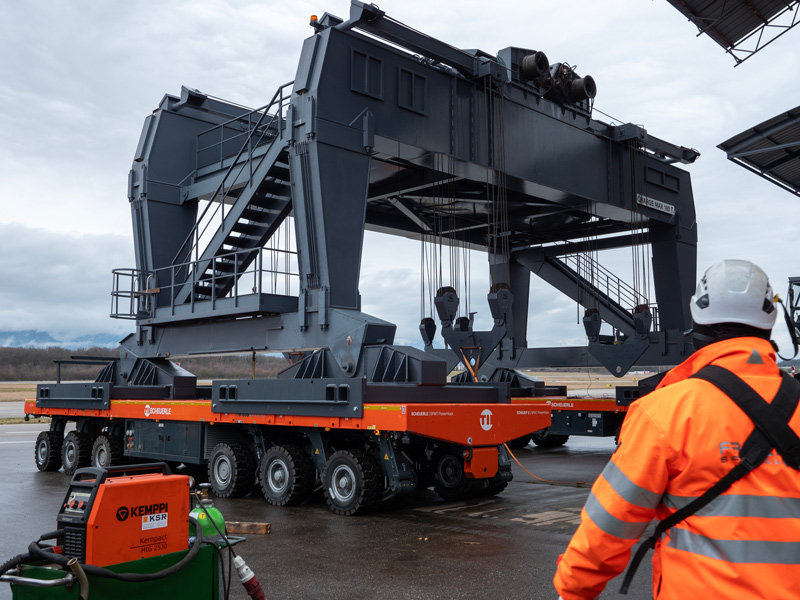 Go to summary
Go to summary

Launch of Cap2030
In 2023, 129 projects were carried out (compared to 140 in 2022) for an investment of 54.7 million CHF. Large-scale projects such as GeniLac and the Baggage Sorting Logistics Centre (BLC) account for the majority of financial resources and require the intensive commitment of the Infrastructure Department.
Planning for a new terminal
The outcome of a lengthy study initiated several years ago, the CAP2030, project took off in 2023.
The CAP2030 project aims to adapt Terminal 1 to the contemporary needs of users and to prepare it for the future.
Commissioned in 1968 and designed to accommodate 5 million passengers per year, the current terminal no longer guarantees an optimal experience and comfort. Ultimately, the new terminal will make itineraries more fluid, offer more options to different groups of travellers by adapting to their specific needs, and bring this building up to the most demanding standards, which is, for many passengers, the first approach to Switzerland and International Geneva.
The main characteristic of the project called CAP2030, associated with the creation of a new modal platform with the CFF, lies in the construction of new surfaces while maintaining the continuity of current operations. The multimodal platform will optimise the connectivity of Genève Aéroport with all modes of mobility. Travellers will be able to benefit from efficient connections with public transport and an adequate commercial offer, while travelling along a coherent linear route.
The year 2023 was marked by the tender being awarded to the company Losinger-Marazzi SA-Bouygues Bâtiment International (LMB), in November. The award of this design-construction contract marks the implementation of this strategic project which will greatly improve passenger reception and operability.
A new 40,000 m² terminal will be built on the esplanade in front of the main entrance to T1. Operational activity will be transferred to this new infrastructure after 2032.
These two strategic projects, CAP 2030 and the multimodal platform, are estimated at this stage at around 640 million CHF. The work will be carried out from 2026 to 2032.

Connection to GeniLac
Thanks to its connection to the SIG GeniLac ecological thermal network, Genève Aéroport will no longer use fossil fuels to cool and heat its buildings from 2026.
The year 2023 was marked by the progress of this essential project for the energy transition of Genève Aéroport: a connection phase to the GeniLac ecological thermal network of SIG was completed. This is the part connecting GeniLac to Palexpo.
From 2026, the airport will abandon its oil-fired boiler room save two million litres of fuel oil by doing so per year. Ultimately, it will reduce its carbon dioxide emissions by 60 %. To adapt these infrastructures and create this new equipment, Genève Aéroport will invest 37 million CHF.
Genève Aéroport and SIG are pooling their efforts by jointly building a 3,800 m2 thermal power plant on the P45. It will house the GeniLac substation on one side and, on the other, two gas boilers serving as backup in the event of extreme cold or a breakdown. The construction of this new thermal power plant, called the East plant, started in 2022 and is financed to the sum of 54 million CHF by SIG and 7 million by Genève Aéroport.
Pending its entry into service in 2026, adaptation work will take place on the existing Freight buildings up to the terminal. The new buildings, such as the East Wing, will be directly connected to GeniLac.
The end of the work is planned for the last quarter of 2025.
Drastic drop in energy consumption
In 2023, Genève Aéroport continued its energy performance actions through the deployment and adaptation of the thermal network (CAD AIG), heat production and regulation, which led to a drastic drop in energy consumption of more than 20% compared to 2019, i.e. a saving estimated at around 1,300 tonnes of CO2 per year.
BLC : a complex project
Work on the new Baggage Sorting Logistics Centre (BLC) continued in 2023. The replacement of the current system was necessary due to the obsolescence of the majority of the equipment. The BLC will notably make it possible to meet increased baggage processing needs and meet security standards with the implementation of the latest generation scanners (EDS3). The project, launched in April 2019, is very complex. In addition to the technical challenges, it takes place while maintaining the current baggage sorting system in operation. Now, the built envelopes are almost complete and 90% of the « Arrivals » baggage delivery belts have been completed. More than half of the new checkin counters in the main terminal are in place, and 60% of the conveyor lines are complete. The eight already installed new EDS3 scanners, were tested in the first quarter of 2023. The Genève Aéroport IT teams set up the control room, created the control screen wall and implemented the new operating modes.
The complexity of the site, combined with the plurality of requests from the company with the know-how, caused delays on the site. Failing to comply with the new standards on 1 September 2023, Genève Aéroport had to take compensatory measures. The FOCA required the switch to show all mode, implying the installation of additional 2D x-ray machines and therefore the additional personnel required, while awaiting the gradual activation of all equipment and installations.
A large part of the BLC should finally be commissioned in the first half of 2024, and the complete transition to Standard 3 should take place in Q4.
Satellite 10 expansion
The extension of this infrastructure is now in the phase preceding the request for approval of the plans, scheduled for the first quarter of 2024. In 2023, design progressed with the validation of the preliminary project. First inaugurated in 2008, Satellite 10 was designed as a « bus gate » : it is used for aircraft parked in the middle of the tarmac and accessible only by bus. It has two levels of departure lounges for Schengen and non-Schengen flights. The work on Satellite 10 has several objectives : to create five additional boarding lounges; restructure customs areas by improving working conditions; serve as a relay during the renovation work on Satellites 20, 30 and 40 from 2029 ; offer four WiWo positions (Walk-in Walk-out). Ultimately, with a surface area of 6,120 m2, Satellite 10 will be able to accommodate more than 2,000 passengers per hour. The work will be undertalen in phases and will start at the begninning of 2025 for a completion in 2027.
Creation of P41
Following the effective approval of the plans in 2022, work on P41 began in November 2023. Located under Hall 6 of Palexpo, this car park will initially be allocated to subscribers then, in a second phase, will be made available to passengers with its 532 spaces spread over four levels, compared to 140 spaces currently. This is to compensate for the loss of numerous parking spaces, induced by the GeniLac and CAP2030 projects. In approximately 5 minutes on foot, passengers can reach the main terminal. This project amounts to 24.7 million CHF. The car park should be fully functional by mid-2025.
Renovation of gantries
In 2024, certain concrete slabs of the tarmac will have to be changed. To carry out this meticulous operation, the airport has two metal gantries. The first will lift and remove the old slab ; the second will place the new slab which can weigh up to 110 tonnes. As the two pieces of equipment used for this mission are almost 50 years old, the decision was made to completely renovate them. The year 2023 saw the renovation of the gantries completed. The authorisation request for changing the tarmac slabs can be submitted in the first quarter of 2024.


